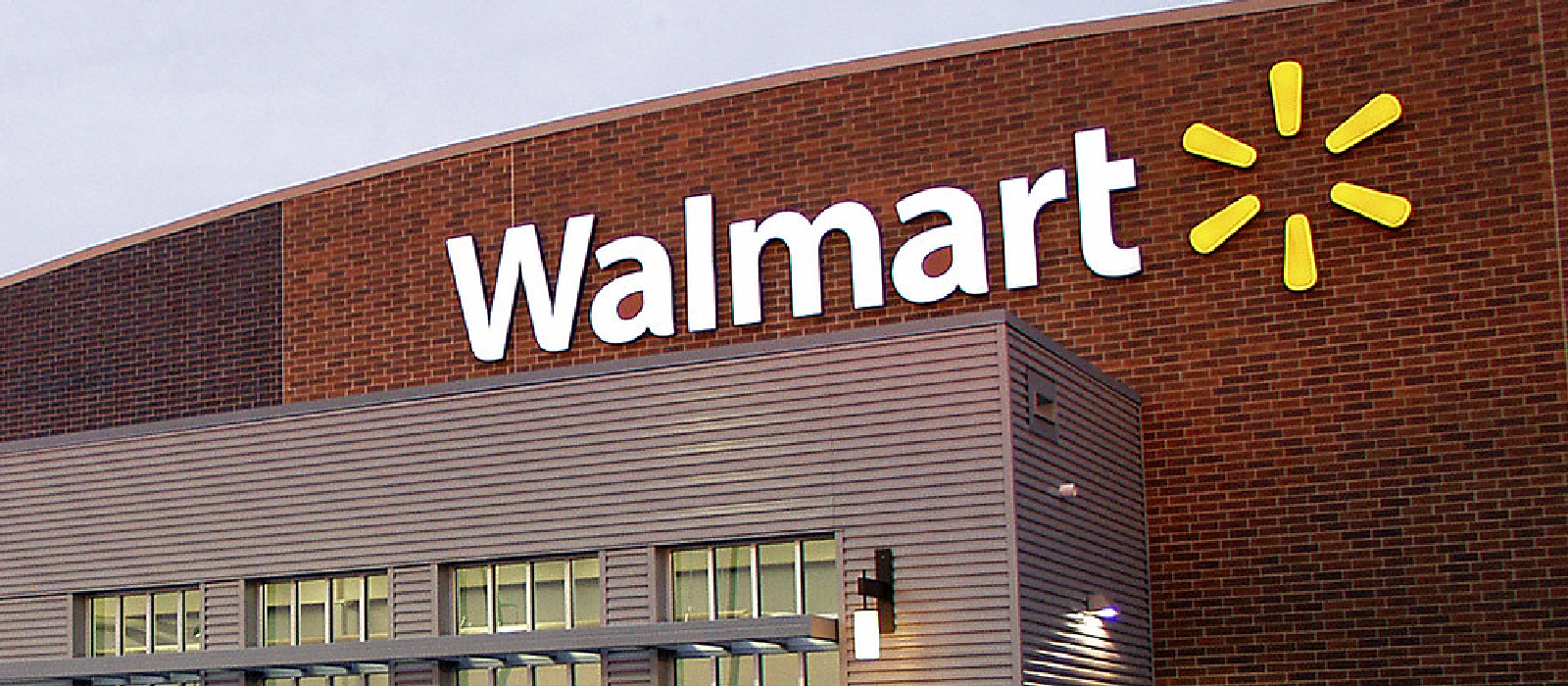
How to win on Target Plus: A tactical guide for cleaner, faster listings
Editor's Note: This blog was initially published April 23, 2020, around the time when rumors of Walmart+ first surfaced. It has since been updated to include the most up-to-date information about the newly minted program.
All eyes are on Walmart as it takes aim at Amazon Prime.
On September 15, the company officially launched Walmart+, a paid membership program that was reportedly in the works for over 18 months prior to its launch. The program offers benefits like free deliveries and membership prices for fuel—with more perks to come as the program gains traction.
Safe to say that the long-running rivalry between Walmart and Amazon is heating up. The largest retailer in the world is (yet again) going head to head against the largest eTailer in the U.S. in this heavyweight battle for hearts and wallets.
Watch Also: "Ask Walmart Anything" Chat on the Application Process, Listing and Advertising
What Walmart Plus (Walmart+) Includes
Walmart is flexing its biggest competitive advantage: a network of stores so vast that 90% of Americans live within 10 miles of one. Walmart is able to use those stores as a warehouse network, pushing products closer to consumers to accelerate deliveries and reduce fulfillment costs.
Walmart+ today includes free, unlimited same-day deliveries on groceries. Recode described it as “a rebrand of Walmart’s existing Delivery Unlimited service, which charges customers $98 a year for unlimited, same-day delivery of fresh groceries from one of the 1,600-plus Walmart stores in the US where the program is available.” Sure enough, Walmart+ is priced $98/year, putting it below Amazon Prime’s $119/year subscription fee.
Other benefits included with a Walmart+ membership:
- Free unlimited delivery across 160,000 items for orders $35 and up, whether the purchase is made in store or online. (Update December 4, 2020: Walmart is dropping the $35 shipping minimum for orders made online by Walmart+ members, offering next-day and two-day shipping free of charge no matter the basket total. However, any deliveries from Walmart stores will still carry a $35 minimum.)
- Discounted fuel prices (save 5 cents per gallon) at Walmart and Murphy gas stations (note: Amazon doesn't have any gas stations)
- A new scan-and-go service that allows members to bypass the checkout lines at Walmart stores and enjoy a contact-free experience
- 15-day free trial
- Two pricing plans: $12.95/month or $98/year
- Rumored to come soon: prescription discounts at Walmart pharmacies (note: Amazon doesn’t have brick-and-mortar pharmacies)
With these possible perks, Walmart may be trying to avoid a direct duplication of Amazon Prime. Some observers praise the move, saying that Walmart+ could offer a “powerful combination of convenience and value for a busy household on the move."
Others think Walmart’s efforts to differentiate won’t be enough, predicting that Walmart+ may still be overshadowed by Prime’s on-demand video and music. There are also varying guesses as to whether the retailer will be able to keep up with delivery logistics.
One analyst suggests Walmart should focus on offering a meaningful program for its current customers, build it up over time and not worry about competing with Prime, even if spectators continue to compare the two. That approach would allow the program to succeed on its own terms and build momentum towards attracting new customers in the long run.
Punches and Counterpunches in Ecommerce
Walmart+ is the latest example of the company’s commitment to growing its commerce business. To date, that’s meant countering every significant Amazon initiative with a competitive move of its own.
Walmart first got serious about competing with Prime in January 2017 (a year after its $3.3 billion acquisition of Jet.com). Amazon’s subscription service had long offered free two-day shipping to its members. Walmart flaunted a subscription-free model that offered free shipping on all orders over $35 (no membership fee required). This marked the permanent extension of a program they’ve seemingly been testing for years before then—note this cheeky tweet from 2015.

In 2018, Walmart also flexed its vast store network: the company introduced free pick-up of online orders via new vending machine-like pickup towers at 700 Walmart locations.
Amazon raised the stakes in April 2019 by pursuing free one-day shipping for Prime members. Just over two weeks later, Walmart rolled out one-day shipping in 40 top U.S. metropolitan areas—and kept it free for orders over $35.

But the impact and adoption of Walmart’s initiatives have always been dwarfed by the success of Amazon Prime, which got all the attention and—based on Amazon’s extraordinary Q4 results for 2019—the favor of 150 million buyers. (More people joined Prime in those last three months of 2019 than in any quarter ever, according to Amazon.)
Walmart attracts a whopping 265 million customers each week at its stores across the globe, with its greatest US success being in groceries. But so far the company has not been able to fully tap into that huge customer base for online shopping. While Amazon accounts for nearly 38% of online retail in the US, Walmart only accounts for 4.7 percent–and just last year, Walmart projected losses of more than $1 billion for its US ecommerce division.
The companies have also traded jabs in the battle to attract third-party sellers. Walmart ecommerce U.S. CEO Marc Lore recently said that “fulfillment by Walmart is one of the areas we’re actively looking at right now,” with the potential for aggressive investments to improve delivery and fulfillment times and lift Net Promoter Scores for sellers and customers.
Update (May 1, 2020): Walmart unveiled a 2-hour delivery service called Express Delivery, rivaling Amazon's Prime Now. "Walmart has accelerated the development of the service in the wake of the coronavirus pandemic, piloting Express Delivery in 100 stores since mid-April," read a press release. "The service will expand to nearly 1,000 stores in early May and will be available in nearly 2,000 total stores in the following weeks." Talk about a flex.
What Walmart+ Means to Sellers
Here’s what we’re thinking so far. If Walmart+ does ratchet up competition for Amazon and attract more customers (and sellers) to the Walmart Marketplace, it could lead to better, more competitive services and fees for sellers on both Amazon and Walmart.
Case in point: Amazon lowered its fees for Multi-Channel Fulfillment (MCF) in Spring 2020, shortly after Walmart announced Walmart Fulfillment Services (WFS)—a service “built with sellers, for sellers.” Is this mere coincidence? (Probably not.)
Read Also: The Risks of Relying on Amazon MCF
Walmart+ could also mean more opportunities for marketplace sellers to reach a broader pool of customers. Given Walmart+'s unique perks, we predict that many consumers will be willing to give the program a shot, even if they have a Prime membership already.
Today, more than half of Walmart’s top-spending families are Prime members, reports Vox’s Recode—but that could change as Walmart offers new perks in addition to its superior, lower-cost grocery offers.
For sellers, having a presence in an additional marketplace like Walmart generally means exposure to different cohorts of customers. It also means the backing of a highly reputed retailer, whose shoppers already trust the products sold through its site. Other advantages include higher search-ability online, greater brand visibility and more opportunities to gain reviews on your products.

The impact of the COVID-19 outbreak also underscores the importance of diversifying your sales channels. One policy change, glitch or black hat attack on a marketplace can jeopardize your sales—you never want to be without any channel to continue driving customers to.
Get Started Early
Sometimes our instinct is to wait and see how things play out, but in this case, you’ll want to get set up on Walmart early if it makes sense for your business.
Already, Walmart’s Marketplace is notorious for being more exclusive and difficult to launch to. Every seller is required to send in an application and meet strict criteria, such as:
- Experience selling on other online channels
- Positive ratings and proof of good customer service
- Proof of business (business address, tax forms and other documentation)
- The right stuff in your catalog (a “unique” or “compelling” assortment of products)
- The right prices
- Proof of fast, reliable fulfillment capabilities
Approval may take anywhere between several days or weeks, and getting product data formatted correctly for Walmart can be tedious. Walmart also works on a first-come-first-served basis like Amazon. So, if you’re not the first to list a product to the marketplace, then you have less control over the listing and disputes involving other resellers.
Get started now, and tap a partner like Zentail who can help in all areas of launch. As a preferred partner by Walmart, the Zentail platform can help you get up and running in record time. Instead of manually creating every listing, simply enable Zentail’s AI-powered multichannel listing tools to instantly upload your catalog and format product data to Walmart’s requirements.
Get additional inventory and forecasting tools that are built for multichannel use to keep your profits up.
Once set up, you can rest easy knowing that as Walmart+ takes off, you’re ready to seize the opportunity.




.png)

